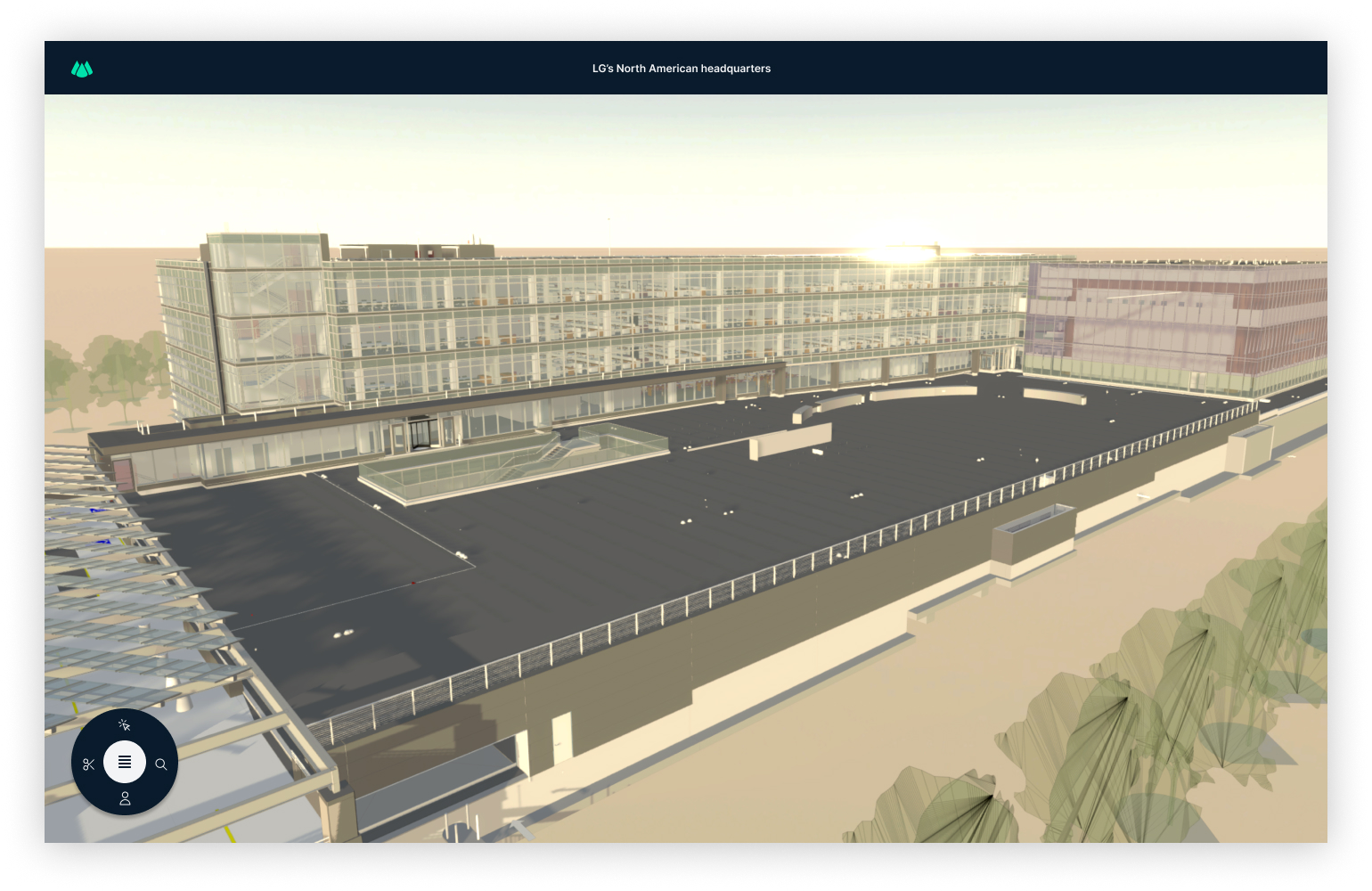Viewer technology to power Qonic’s solid modelling
At Qonic we are creating a powerful modelling toolbox for enriching and upscaling of BIM models, both in geometry and data (see our Mission Statement). To make that happen, we are working on multiple pieces of the puzzle to fall together. The first fundamental piece, which lies at the foundation of our technology stack, is the viewing engine.

The viewing engine should be able to provide a smooth and interactive viewing experience and should support working with accurate solid geometry to not sacrifice visual correctness. As BIM models are getting larger and more complicated, this is a tough nut to crack.
“Getting the viewing fundamentals right was a key priority – needed for building Qonic’s unique solid modelling workflows on top of it.”
Visual quality and correctness
Our viewer engine should have excellent visual quality and correctness. Real-time rendering is commonly used in the gaming industry for photorealistic, or close to reality, effects. We are using real-time rendering technology from Unity, a cross-platform game engine, at the basis for our viewing engine. On top of that, we have built several visual features to optimize the viewing experience for solid modelling.
Different rendering techniques (shadows, ambient occlusion, etc.) are combined to explore the building model in close to reality. Multiple navigation modes allow you to explore a building model, along with sectioning tools to see more clearly what’s inside the building. Edges are displayed for easier solid modelling in the future, and super-fast selection/highlighting tools are available to manipulate and explore element properties.
Interactivity and speed
When you navigate around in the model, or in the future manipulate solid geometry, the rendering speed needs to be sufficiently high such that everything is perceived as natural movement. There is an upper limit in the amount of data that can be processed, so we have implemented several acceleration techniques in our technology.
One acceleration technique which is of particular interest for BIM modelling, is level-of-detail (LOD). BIM models typically contain a lot of small objects, ranging from furniture and technical equipment to reinforcement bars, making it perfectly suitable for LOD acceleration.
With LOD, the complexity of a 3D object is reduced when the object is far away from the current viewpoint. The small objects then have a less detailed representation but gives the same visual impression from a distance. Regardless the size and complexity of the BIM model, the number of triangles rendered on the screen remains constant, making our viewing technology perfectly scalable.
LG’s North American headquarters, designed by HOK, is a 33,000m2 office building in New Jersey. This coordinated BIM model with 9 disciplines (architecture, structure, MEP, interior, ...) contains 153,774 building elements. This model was imported via IFC, then translated to solids, and is now used to test the performance of our viewing engine.
Get in touch!
Keep following us to see more updates. As we’re building the Qonic toolset in the months to come, we would like to speak to you. Feel free to reach out to us, follow Qonic on LinkedIn or subscribe to our website www.qonic.com.
Join our community
Sign up
to Qonic and start exploring.